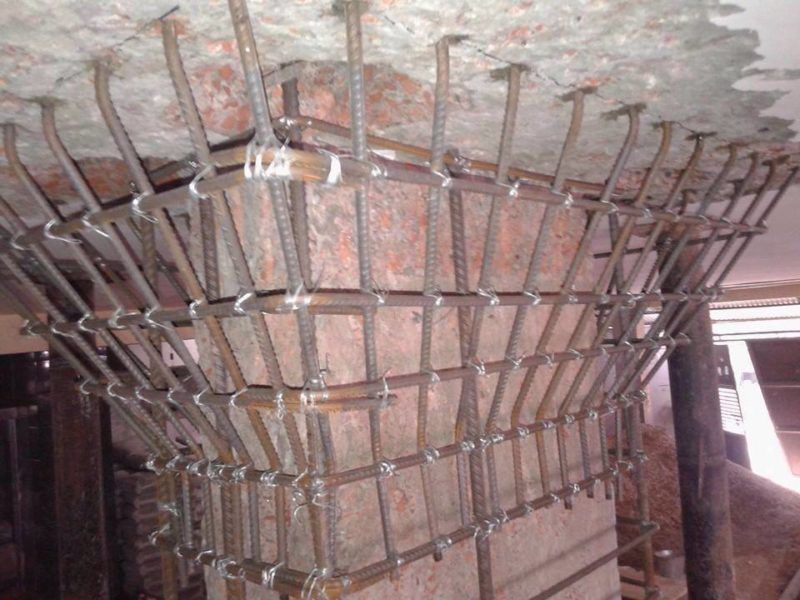
The Architectural Metal for Retrofitting
The architectural metal used for retrofitting is a flexible material that can be utilized in various construction projects. It is durable and is able to withstand many years of wear and tear which makes it an excellent option for bridges and other structures which are often utilized.
One of the primary benefits of using architectural steel to retrofit is that it is able to be tailored to meet the specific needs of the client. For instance, if need to provide additional support to a structure it is possible to use architectural metal for this.
In addition, if you’re looking to make a modern appearance for your home, architectural metal is a great way to accomplish this goal. There are numerous kinds of architectural metals that are available so be sure to select the one most suitable for your needs.
The Durability of Architectural Metal for Retrofitting
A recent study in collaboration with the National Institute of Standards and Technology (NIST) discovered that roofing made of metal is more durable than originally thought when retrofitted to older structures. The study examined the roofing made of metal on pre-1940s residential and commercial buildings to evaluate the strength of the material under various temperatures and weather conditions.
The NIST study showed roofs that have a metal coating last longer when in extreme heat than roofs without coating however both kinds of roofing materials are much more robust than wooden ones in colder climates. Metal roofs also performed better in snow and rain when compared to other kinds of roofing, such as clay tiles, asphalt shingles, and fiberglass sheets. The longevity of roofing made of metal has been a major concern for a long time because older structures often have slate or wood roofing that might not be capable of enduring strong winds or heavy rains.
How Architectural Metal Can Improve The Structural Integrity Of Retrofitted Buildings?
Historically, many buildings were constructed with natural materials like wood and brick. However, with the advent of modern construction methods and technologies, many buildings are now retrofitted with metal frames and other types of architectural metal.
One reason why metal is often used in buildings is that it’s an efficient structural material. Metal features a strong tensile strength as well as low shear strength, meaning that it is able to support a significant amount of weight and not break. In addition, it is also resistant to corrosion, which means it will last for a long time without needing to be maintained.
However, using metal in buildings comes with some risks. For example, if the frame of a building is made from metal, there’s a greater chance that it will collapse during an earthquake or storm. Furthermore, metal can also cause acoustic interference when it’s vibrating; this can impact the sound quality of rooms in a building.
How Effective Is The Architectural Metal For Retrofitting?
Retrofitting an older building can be a challenging job. Architectural Metal can help make the process easier by offering a sturdy and cost-effective option for retrofitting buildings made of metal. Architectural Metal is made of thick gauge steel which has been sandwiched with two layers of premium insulation. This makes the material extremely durable and strong and able to stand up to extreme weather conditions as well as the weight of both people and vehicles.
Architectural Metal for Retrofitting can be utilized in a variety of ways to retrofit buildings made of metal. It is easy to install without having to take off the structure that is in place. It can be installed easily without the need to take down the existing structure. In addition, Architectural Metal is perfect for installation in places that are hard to access for example, beneath balconies or in cupboards.
What Are The Materials Used For Retrofitting Of Concrete Structures?
Concrete is a durable and tough material, but it’s susceptible to deterioration over time. If damage is severe, the concrete may become extremely unstable and could even require replacement. There are numerous different substances that can be used to upgrade or replace concrete structures.
The most well-known materials for retrofitting or replacement are steel aluminum, fiberglass, and plastic. Each one of these materials comes with its distinct advantages and drawbacks. The most widely used replacement material is fiberglass, due to its durability and durable.
However, it can be costly to put in. Fiberglass is an excellent choice for concrete replacement because it is light and doesn’t corrode. Fiberglass also has excellent thermal properties, meaning it will keep buildings cool even in hot temperatures. Aluminum is an excellent choice to retrofit because it’s inexpensive and simple to use.

What Are The Modern Techniques Of Retrofitting?
Architectural Metal for Retrofitting can be a costly and time-consuming process, but there are modern techniques that can make the process more efficient. Retrofitting involves modifying an existing structure or system in order to better meet the needs of a specific environment or application. There are many different types of retrofits with each having its own advantages and drawbacks. One kind of retrofit is adaptive reuse. This involves using an abandoned or underutilized building as a new home for a government agency, business, or nonprofit organization.
By restoring the building to its original condition and using modern amenities such as air conditioning and security systems, adaptive reuse allows these organizations to save money on rent and stay in close proximity to their customers. Another type of retrofit is incremental renovation. This approach relies on updating an existing structure rather than completely rebuilding it from scratch.
